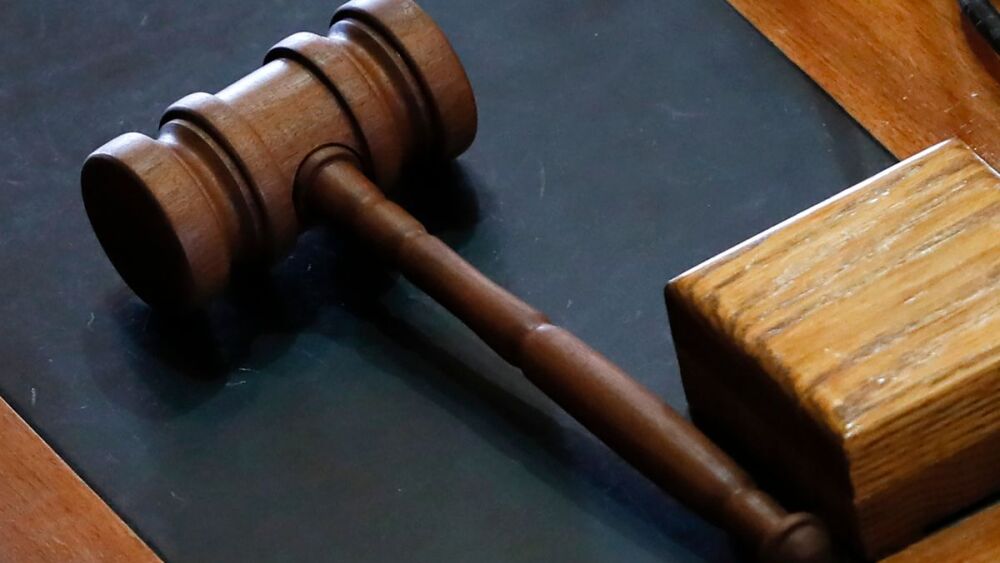The First Amendment contains several express rights, which include speech, assembly and petition of the government. There is a separate inferred right of association.
The clubs, organizations and individuals we align ourselves with are as much of a protected expressive right as is speech. Any prosecutor who has sought to disband organized crime or a criminal street gang knows that merely identifying someone as a member of a particular group is not sufficient. A predicate act in furtherance of the alleged criminal group must be shown.
The basic tenet of criminal law is that the government punishes criminal acts not criminal thoughts. The closest our criminal law comes to punishing thought is with conspiracy crimes, but even with these prosecutions, the law requires an overt act.
Capitol Building attack
In the wake of the January 6 Capitol Building riot and attempt to subvert the process of government, we learned police officers were present and took an active part in the criminality. Currently, there are approximately 32 investigations of officers nationwide. Already there have been resignations and individual departments have moved toward the termination of these officers.
These are easy personnel decisions for police administrators to make. However, what is to be done about officers who, while not present at the Capitol Building on January 6, have associated with or joined groups determined to undermine civil order and lawful rule? This is the harder personnel issue confronting police administrations.
First Amendment protection of associative rights, especially for off-duty conduct, apply and must be given careful consideration. Nevertheless, police departments are not powerless to act. Proper investigation, identification and justification are key to any management decision regarding an officer’s continued employment.
Oliver Wendell Holmes, in an often-referenced case from when he was a Massachusetts state judge, said a police officer “may have a constitutional right to talk politics, but he has no constitutional right to be a policeman” (McAuliffe v. City of New Bedford, 1892). Since then numerous cases have recognized a public employee’s First Amendment right of free speech and association.
A 2016 U.S. Supreme Court case, Heffernan v. City of Paterson, held that a public employee, in this instance a police detective, who was demoted based upon perceived involvement in protected First Amendment political speech, was entitled to challenge his demotion and prove the employer’s actions were improperly motivated. While this case protected a public employee’s First Amendment rights it did not provide any significant change in the existing case law pertaining to public employee First Amendment rights, especially those relating to associative relationships.
Understanding First Amendment associative rights
First Amendment associative rights are broken down into two categories:
- The right to associate with others for the purpose of engaging in the First Amendment activities of assembly, speech, petition of the government and religion.
- The right to intimate association wherein individual choices of whether to enter into and maintain intimate human relationships and with whom is protected from undue government intrusion.
Any attempt at government regulation of an intimate association will be closely scrutinized by a reviewing court. These types of intimate associations typically focus on familial relationships, but not exclusively. The Supreme Court in Roberts v. United States Jaycees (1984) described intimate associations as those that are small, highly selective and secluded from others in the main aspects of the relationship. Participation in clubs, fraternities, or friendships has not been granted protection as intimate associations. For example, see Bd. of Dir. of Rotary Intl. v. Rotary Club of Duarte (USSC, 1987); Pi Lambda Fraternity, Inc. v. Univ. of Pittsburgh (3d Cir., 2000); and Patel v. Searles (2d Cir., 2002).
A right to protect reputations
Police employers have a right to protect the reputation of their agencies and to remove an employee whose personal activities, including certain off-duty conduct, brings discredit to the agency.
Many court cases have been reported wherein officers were terminated for inappropriate personal relationships. These forbidden relationships have involved associating with convicted criminals, extramarital affairs, participation in pornography videos, and membership in certain groups or associations. Case law provides public employers with ample precedent to dismiss employees whose personal associations are deemed antagonistic to the employer’s overall mission and integrity.
Consider the 2003 Second Circuit case of Melzer v. Bd. of Ed. of City Sch. Dist. of City of New York wherein the court held the Board of Education met its burden under the Pickering test when it dismissed a schoolteacher for his membership in NAMBLA (North American Man-Boy Love Association). There were no allegations of any improper acts committed by this teacher with an underage child, but he was a self-professed pedophile who wrote for and edited the organization’s publication and advocated for consensual relationships with underage boys. He was disciplined by his employer for advancing the goals and activities of NAMBLA, which included illegal activity. The Second Circuit said, “the plaintiff’s association and his degree of active involvement in NAMBLA caused disruption to the school’s mission and operations justifying the Board’s action terminating him.”
Although police officers generally enjoy collective bargaining agreements, these contractual agreements will not necessarily provide protection for officers whose membership in questionable organizations comes to the attention of an employer.
In two prior decisions, W.R. Grace & Co. v. Rubber Workers (1983) and United Paperworkers v. Misco, Inc. (1987), the U.S. Supreme Court said a court cannot enforce a collective bargaining agreement that is contrary to public policy. Both cases were cited in the 2009 Nebraska Supreme Court case, State v. Henderson, upholding the firing of a veteran state trooper based on his membership in a Ku Klux Klan affiliated organization.
The court in Henderson said Nebraska had an “explicit, well-defined, and dominant” public policy “as old as the State itself: that the laws of Nebraska should be enforced without racial or religious discrimination.” Thus, said the court, to reinstate the trooper would “severely undermine reasonable perception that the agency is uniformly committed to the equal enforcement of the law” and each resident of the state could depend on law enforcement officers to equally enforce the law without regard to race. The court concluded by noting that reinstatement of the trooper would negatively align the Nebraska State Patrol with the Ku Klux Klan and “severely undermine public confidence in the fairness of law enforcement and the law itself.”
Similar results in other cases support the public employer’s right to terminate employees for associative conduct that violates public policy and tends to discredit the employer. This is especially the case with law enforcement employment. A California court upheld the termination of a deputy sheriff for violating the department’s non-association policy by carrying on a relationship with a known prostitute heroin addict. In doing so the court recognized the police department’s legitimate interest in regulating the associations of its sworn officers in order to maintain the credibility and integrity of the department (Bautista v. County of Los Angeles, CA Ct Apls., 2010).
The New York State Court of Appeals has dismissed constitutional claims of a policy being overly broad and upheld a police department’s regulation preventing officers from associating with persons convicted of misdemeanor or felony offenses. (Morrissette v. Dilworth, 1983). The New York Court said the regulation was based on a valid governmental concern with the integrity of law enforcement. Public perception of the department, the court noted, was impacted by the activities of its officers.
A 2005 federal district court case from Connecticut sustained the discipline of several correction officers for associating with members of the Outlaws Motorcycle Club (Piscottano v. Murphy). Not only was the integrity of the Department of Correction a legitimate factor upholding the regulation, but also the employer’s expressed concern for security at its facilities based on information about the criminal activity of the motorcycle club. In an unrelated but relevant case out of Connecticut, the Second Circuit Court of Appeals ruled against five police officers who were forced to cover up pre-existing tattoos considered by the employer to be offensive or racist (Inturri v. City of Hartford, 2006).
The foregoing cases present a glimpse into a well-established body of state and federal case law supporting public employers in general, and specifically law enforcement employers, in regulating the associative relationships of its employees, even those who are off duty. A police officer’s association with an organization deemed to be extremist, with views that do not comport with the public safety mission of the police agency, can be the basis of disciplinary action resulting in termination. For those cases where an officer’s association falls short of a terminable offense, police administrators may consider placing restrictions upon the offending officer’s ability to interact with the public. Furthermore, placing the officer in a Brady-Giglio file will restrict the officer’s ability to testify in court. This alone may also be reason for termination.
Review internal policies
Police administrators can eliminate the harmful impact of any extremist affiliated officers in their ranks by remaining vigilant. Every agency should have a social media policy in place that defines improper and unacceptable communications. Anti-association policies should be reviewed and, if lacking clarity, amended to accurately reflect existing case law requirements.
The identification of off-duty police officers taking part in the January 6 Capitol Building assault was an embarrassment and disgrace to the law enforcement profession. What is less visible, but just as disturbing, are the hundreds of cases across the country in the last few years where police officers have been disciplined or terminated because of racist or other hateful social media postings. These incidents highlight the need for the profession to review internal policies and regulations to ensure all employees are on notice of what constitutes improper behavior, as well as to reconsider procedures for the proper vetting of police candidates for the position of public trust they are to assume.



